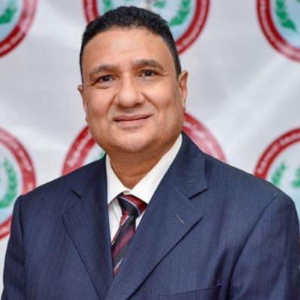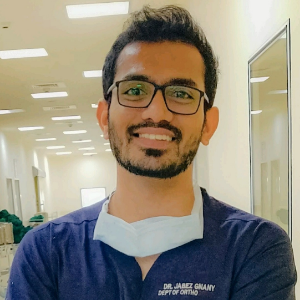Takanori Saito, Kansai Medical University, Japan
Minimally invasive spine surgery (MIS) was not applicable to the adult patients with spinal deformity having a worsened global balance on the sagittal plane. Recently, XLIF has enabled a frontal approach to dissociate intervertebral disc and minimally invasive insertion of cage w [....] » Read More

































Title : Outpatient total elbow arthroplasty – Outcomes and complications: A systematic review and meta-analysis
Vishwajeet Singh, Barts Health, United Kingdom
Background: Total elbow arthroplasty (TEA) is a surgical procedure used in the management of arthritis and fractures. Outpatient total elbow arthroplasty (OTEA) could be a valid option to reduce workforce burden and cost, provided it can be proven to be equally safe and effective [....] » Read More
Title : Fascia iliaca block administration– A new key performance indicator for neck of femur fracture care. QIP cycle 5
Dipak Karavadara, Kettering General Hospital, United Kingdom
Introduction: Fascia iliaca block (FIB) in patients with fragility neck of femur (NOF) fractures provides more effective pain control than conventional systemic analgesia. In fact, FIB administration is now a key performance indicator for NOF fracture care introduced by the Natio [....] » Read More
Title : Trauma system in England: An overview and future directions
Raheel Shakoor Siddiqui, University Hospitals Birmingham NHS Trust, United Kingdom
Major trauma is a dynamic public health epidemic that is continuously evolving. Major trauma care services rely on multi-disciplinary team input involving highly trained pre and in-hospital critical care teams. Pre-hospital critical care teams (PHCCTs), major trauma centres (MTCs [....] » Read More
Title : "Hip hip hooray”: Adequate bone protection for patients with hip fractures
Sari Al Hajaj, Kettering General Hospital, United Kingdom
Background: Managing acute hip fractures involves preventing their recurrence, which is crucial. This is because fragility fractures can elevate the likelihood of subsequent fractures, with as many as 11% of patients experiencing a second fracture within the first year. It has be [....] » Read More
Title : Prp therapy in OA knee- My experience (A series of 123 cases – 143 knees)
Arvinder Singh Bhatia, Dr Bhatia’s Bone & Joint Care Clinic, India
Introduction: Osteoarthritis (OA) is a major source of disability, pain, and economic burden worldwide. Genetic, biochemical, and mechanical factors are responsible for the complex multifactorial epidemiology of the disease. Abnormal joint biomechanics, age, gender, joint injury, [....] » Read More
Title : Imageless robotics-assisted total knee arthroplasty: A learning curve analysis of surgical time and alignment accuracy
Miten Sheth, The Knee Clinic, India
Introduction: The use of robotics-assisted techniques is increasing in total knee arthroplasty (TKA). The adoption of any new step in surgery is associated with a learning curve and potentially associated with extra complications. The aim of this study was to determine the learni [....] » Read More
Title : The effectiveness of the management of osteoporotic spinal compression fractures
Grace Scopes, University of Buckingham , United Kingdom
Background: In the UK, there is an increasing age in the population, having a direct correlation with increasing prevalence of osteoporotic fractures. Osteoporotic fragility fractures are a huge burden to the NHS with over 300,000 patients presenting with fragility fractures to h [....] » Read More
Title : Neurophysiological grading tool of ulnar nerve entrapment across wrist and across elbow
Salim Hirani, Ysbyty Gwynedd Hospital, United Kingdom
Ulnar nerve entrapment across the elbow (UNEAE) and across wrist (UNEAW) is the second most common entrapment of the hand after carpal tunnel syndrome. There are few gradings available for UNEAE and lesser in UNEAW. The aim of this research is; 1. To create a clinically app [....] » Read More
Title : Bilateral distraction osteogenesis with intramedullary nails for stature increase. Our early experience
Dimitrios Giotikas, LIPS Battersea Healthcare, United Kingdom
Distraction osteogenesis is a therapeutic principle which has been known for more than six decades. The introduction of elongating intramedullary nails in the last 20 years- initially in the form of mechanical nails (Albizzia® nail, g-nail®) and subsequently in the [....] » Read More
Title : Distal metatarsal osteotomy through minimally invasive approach for mild-tomoderate hallux valgus deformity
Ahmed Ibrahim Al Nabawy Enan, Mansoura Faculty of Medicine, Egypt
Background: Hallux valgus is a common condition that affects the forefoot. A large number of procedures are described for managing this condition. The minimally invasive corrective surgery of static disorders of the forefoot is an undisputable progress because of its decreased mo [....] » Read More
Title : Comparative analysis of functional outcomes following operative or non-operative management in displaced extra-articular distal radius fractures
Muhammed Ehsan Nazeer, Cumberland Infirmary, United Kingdom
Background: Fractures of the distal radius are highly prevalent and constitute a significant proportion of injuries encountered in routine clinical practice, accounting for approximately 4% of emergency department cases. However, despite their frequency and the potential conseque [....] » Read More
Title : Ipsilateral heterotopic ossification in the knee and shoulder post long COVID-19 requires prolonged rehabilitation
Raheel Shakoor Siddiqui, University Hospitals Birmingham NHS Trust, United Kingdom
A 58 year old gentleman presented to accident and emergency at district general hospital with worsening shortness of breath and a non-productive cough over a period of five days. He was initially admitted under the medical team for suspicion of SARS-CoV-2 (COVID-19) pneumonitis. [....] » Read More
Title : Providing antibiotic prophylaxis to patients with hip fractures in a district general hospital. Finding a solution to a problem.
Sari Al Hajaj, Kettering General Hospital, United Kingdom
Background: To prevent infections in orthopaedic surgeries, one dose of IV cefuroxime or flucloxacillin with gentamicin is recommended by NICE. Teicoplanin or vancomycin with gentamicin can be used if needed. Administering antibiotics within 24 hours of surgery reduces the r [....] » Read More
Title : To determine out come of the first sign Nail (Intramedullary nail) in Somalia and (North Somalia)
Said Osman Dahir, Hargeisa Group of Hospital, Somalia
I will talk about the first intrameddulary nail in somaliland. In somaliland we used to treat plating for adult both tibia and femure shaft fractures but since march 2019 up to now. Hargeisa group hospital was the first hospital in Somalia to done intrammedullary nailing (sign na [....] » Read More
Title : Additive manufacturing and its role in optimising mechanical and antimicrobial properties of orthopaedic implants
Mitchell Murray, Surgical and Orthopaedic Research Lab and University of Sydney, Australia
Background: The demand for improvement in orthopaedic implants is growing in line with an ageing population. An ideal prosthetic should have proficient biocompatibility, durable anti-infective efficiency, allow osseointegration and maintain desirable mechanical characteristics.&n [....] » Read More
Title : Gun massacres! Public health issue. No guns! No massacre!
Cavin Staff, University of Queensland, Australia
The massacre in Port Arthur, Tasmania, in 1996, where 35 civilians were killed and 23 others wounded, represents a dramatic and historic turning point relating to Gun Violence in Australia. Since then, 27 years later following drastic measures by John Howard’s Governmen [....] » Read More
Title : Predictors and cost-effectiveness of 1-year postoperative mortality and readmission of hip fracture in the elderly: A comparison of different treatments
Tzu Chieh Lin, Taichung Veterans General Hospital, Taiwan
Hip fractures, especially femoral neck fractures (FNF), are common and have high mortality rates within a year, causing significant financial and social costs. We conducted a retrospective cohort study using competing risk analysis on FNF patients aged 60 or above who underwent p [....] » Read More